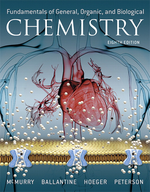?Butane \(\left(\mathrm{C}_{4} \mathrm{H}_{8}\right)\) is an easily compressible gas
Chapter 1, Problem 1.40(choose chapter or problem)
Butane \(\left(\mathrm{C}_{4} \mathrm{H}_{8}\right)\) is an easily compressible gas used in cigarette lighters. It has a melting point of \(-138.4 { }^{\circ} \mathrm{C}\) and a boiling point of \(-0.5{ }^{\circ} \mathrm{C}\). Would you expect a butane lighter to work in winter when the temperature outdoors is 269 K? Why or why not? (Refer to Figure 1.9.)
Text Transcription:
C_4H_8
-138.4^circ C
–0.^circ C
Unfortunately, we don't have that question answered yet. But you can get it answered in just 5 hours by Logging in or Becoming a subscriber.
Becoming a subscriber
Or look for another answer
